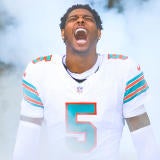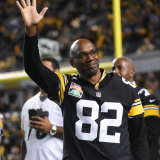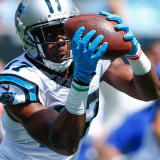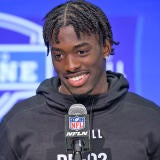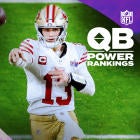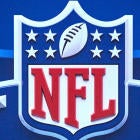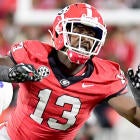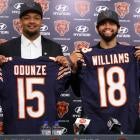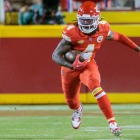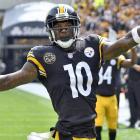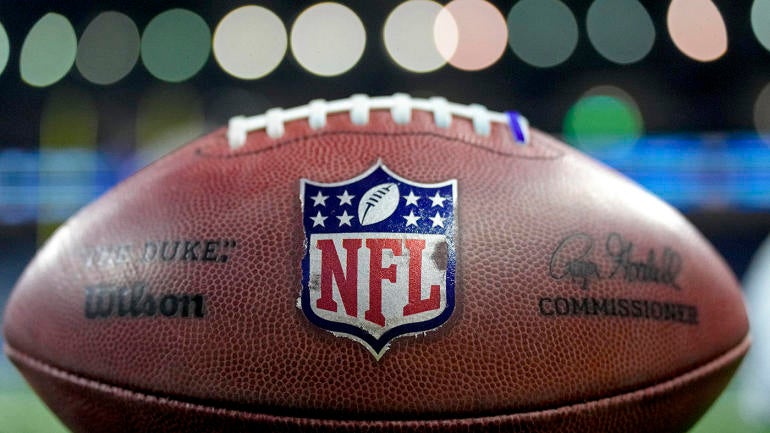
This offseason, NFL owners put a bylaw into effect that will have a noticeable impact in 2023. It will allow each team to field an emergency quarterback on game days that will go against its 46-man active roster.
This was a significant move by the league's owners, a clear reaction to what played out in the 2022 NFC Championship game just last season. The rule significantly reduces the likelihood for a situation where injuries at quarterback forced the San Francisco 49ers to insert Pro Bowl running back Christian McCaffrey at the position for a significant portion of the team's 31-7 defeat against the Philadelphia Eagles.
With that in mind, here are the specifics surrounding the new rule and how it could affect team's roster management in 2023 and beyond.
What is an emergency third quarterback?
A team must label an actual quarterback as their "inactive/emergency third quarterback" before a regular-season or postseason game. That designation must be spelled out on the gameday administration report that is turned in before or at the 90-minute meeting with the following stipulations met:
- The emergency third quarterback must be on the team's 53-player roster; the player cannot be an elevated practice squad player.
- The team's starting quarterback (QB1) and its backup quarterback (QB2) must also be on the team's 53-man roster.
- A club must have two bona fide quarterbacks on its 47/48-player gameday active list to have an emergency third quarterback.
- A club cannot designate an emergency third quarterback if it has three or more bona fide quarterbacks on its 47/48-player gameday active list.
The emergency quarterback can only enter into a game if a team's active, first two quarterbacks are unable to play because of a disqualification or an injury. The emergency quarterback could enter the game if the QB1 is ruled out and the QB2 is being checked out for an injury. Either of the first quarterbacks are allowed to re-enter the game if either are cleared from an injury.
Teams cannot list players whose official position is not listed as a quarterback. Although, a running back, wide receiver or tight end could play quarterback if on the active roster, unless, of course, the emergency third quarterback is already in the game. Emergency third quarterbacks can warm up with players on the active roster. However, the emergency third quarterback cannot enter a game because the first two quarterbacks were benched.
If there is an equipment problem with a team's first or second quarterback, the emergency third quarterback is not allowed to enter the game. In that specific situation, a team can use another active player or call a timeout. The emergency third quarterback is not allowed into the game for trick plays or the Wildcat formation. When in the game, no other player can take the snap besides the emergency quarterback. This player is allowed to quick kick, but they cannot be used as a punter or kicker on special teams. If a team breaks one of these rules, they will be given an unsportsmanlike conduct penalty.
How emergency third QB must enter game
The league explains how the emergency third quarterback must enter the game in its official Q&A list.
The emergency third quarterback must report to the referee. This is not required after every play; only when there is a situation that requires the emergency third quarterback to enter or reenter the game. An unsportsmanlike conduct penalty will be assessed if the emergency third quarterback does not properly report to the referee upon entering the game. The referee will confirm with the head coach that QB1 and QB2 are currently unable to participate, but it is not the responsibility of the referee to determine the legitimacy of the injury or medical examination. The referee or a member of the officiating crew will notify the opposing head coach that the emergency third quarterback has entered the game and the referee will make a public announcement to that effect.
The emergency third quarterback can have a radio in his helmet to hear the coaching staff if a team designates its quarterback as one of its three players to have one. Usually, teams have their starting quarterback, a player on defense -- typically a linebacker or a defensive back -- and their backup quarterback as the players with radios in their helmet. If the emergency third quarterback does not have a radio in their helmet, coaches must signal plays to him using hand signs, substitutions or the quarterback going to the sideline.
How emergency third QB must be subbed out of game for QB1 or QB2 to return
This is the specific procedure teams must follow if their QB1 or QB2 can return to the game after they have subbed in their emergency third quarterback, according to the NFL.
If either QB1 or QB2 is cleared to return to play by the medical staff, such player must reenter the game by reporting to the referee. At such time, the emergency third quarterback must be removed from the game and is not permitted to continue to play quarterback or any other position. An unsportsmanlike conduct penalty will be assessed if QB1 or QB2 does not properly report to the referee upon re-entering the game. The referee or a member of the officiating crew will notify the opposing head coach that QB1 or QB2 has reentered the game and the emergency third quarterback has exited the game. The referee will make a public announcement that QB1 or QB2 has returned to the game and the emergency third quarterback has exited the game.
Should a team need to use its emergency third quarterback again in the same game, that player will remain eligible to return to the game if another situation arises to meet that player's inclusion in the game.







